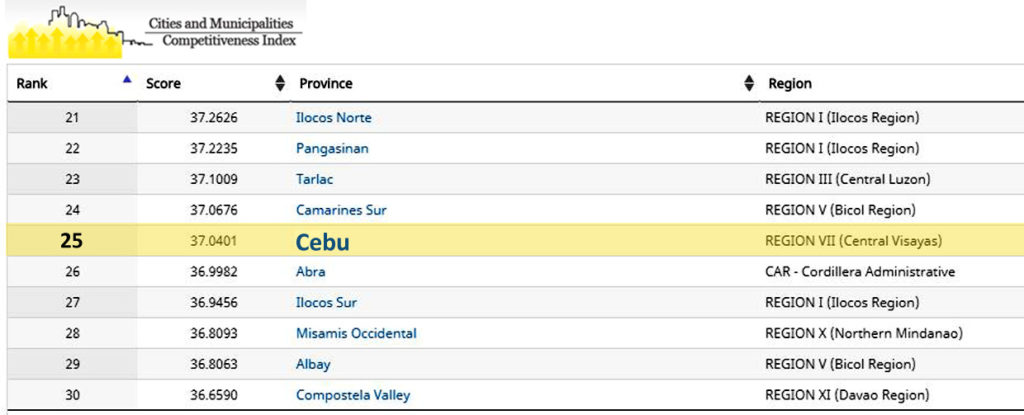After suffering a continuous decline in its rankings the past two years, the Competitiveness Index of Cebu Province has climbed nineteen notches this year compared to 2017.
From being ranked 44th by the National Competitiveness Council (NCC) in 2017, the country’s ‘richest province’ climbed to the 25th spot in this year’s Cities and Municipalities Index (CMI) under the Province category, next to Camarines Sur.
Cebu’s score also rose by 4.2754 points, from 32.7467 in 2017 to 37.0401 in 2018.
The 44th spot in 2017 was Cebu’s lowest ranking in the CMI yet, which also marked a steep drop from 3rd in 2015, and 31st in 2016.
But Bohol, which is smaller than Cebu in terms of land area and population, performed better in the rankings, and was the best ranked of the four provinces that comprised Central Visayas.
Bohol ranked 12 with a score of 38.1887, which is also an improvement from 23rd in the 2017 rankings of NCC.
Siquijor and Negros Oriental were ranked 52 and 35 respectively as no Visayan province made it to the Top 10.
Rizal Province retained its top ranking for the third straight year since 2016.
The NCC Competitive Index was first introduced in 2014 and was limited only to more than 6,000 cities and municipalities of the Philippines.
The scope was expanded to more than 81 provinces in 2015.
The CMI ranking served to gauge the performance of local government units (LGUs), from municipalities to provinces, in terms of economic and infrastructure development and delivering basic services to their respective constituents.
It is also being used to determine a certain area’s attractiveness to private investors as well as its capacity to keep up with both national and international markets.
According to NCC’s guidelines, the overall scores of the cities and municipalities, which also factor in income and population, determine the ranking of the province where they belong.
Meanwhile, the rankings of cities and municipalities are based on the sum of their scores on the four pillars laid out by NCC this year which are: economic dynamism, government efficiency, infrastructure, and resiliency.
